Abstract
1. Systematic studies of the response of baboon's tibialis anticus muscle spindles to stretch were undertaken. Most of the spindle afferents studied had conduction velocities between 72 and 78 m/sec with a range from 39 to 93 m/sec. There was no clear bimodality in the histogram of the conduction velocity. Measurements were made of the axon diameters of the nerve to tibialis anticus. The largest number of the larger axons had diameters from 11 to 13 μ. The largest axon diameter measured 17 μ and there were very few of these.
2. The dynamic index for any given afferent tended to be greater for the more rapidly conducting afferents and lower for the more slowly conducting afferents. However, a statistically significant regression line of this relationship could only be drawn for a stretch velocity of 64 mm/sec.
3. The spindle afferent response to stretch was studied from different muscle lengths. It was found that the velocity sensitive portion of the response to phasic stretch decreased when the stretch extended up to or beyond the maximum physiological length of the muscle.
4. Dynamic and static fusimotor fibres were isolated. The response of the spindle afferent to stretch, while the dynamic fusimotor fibre was being stimulated, was the same as that reported for the cat by P. B. C. Matthews (1962). During static fusimotor stimulation the response of the spindle afferent to stretch was usually like that reported for the cat. In a single case, however, static fusimotor stimulation resulted in a lowering of the peak frequency of the response of the spindle afferent to the phasic portion of stretch.
Full text
PDF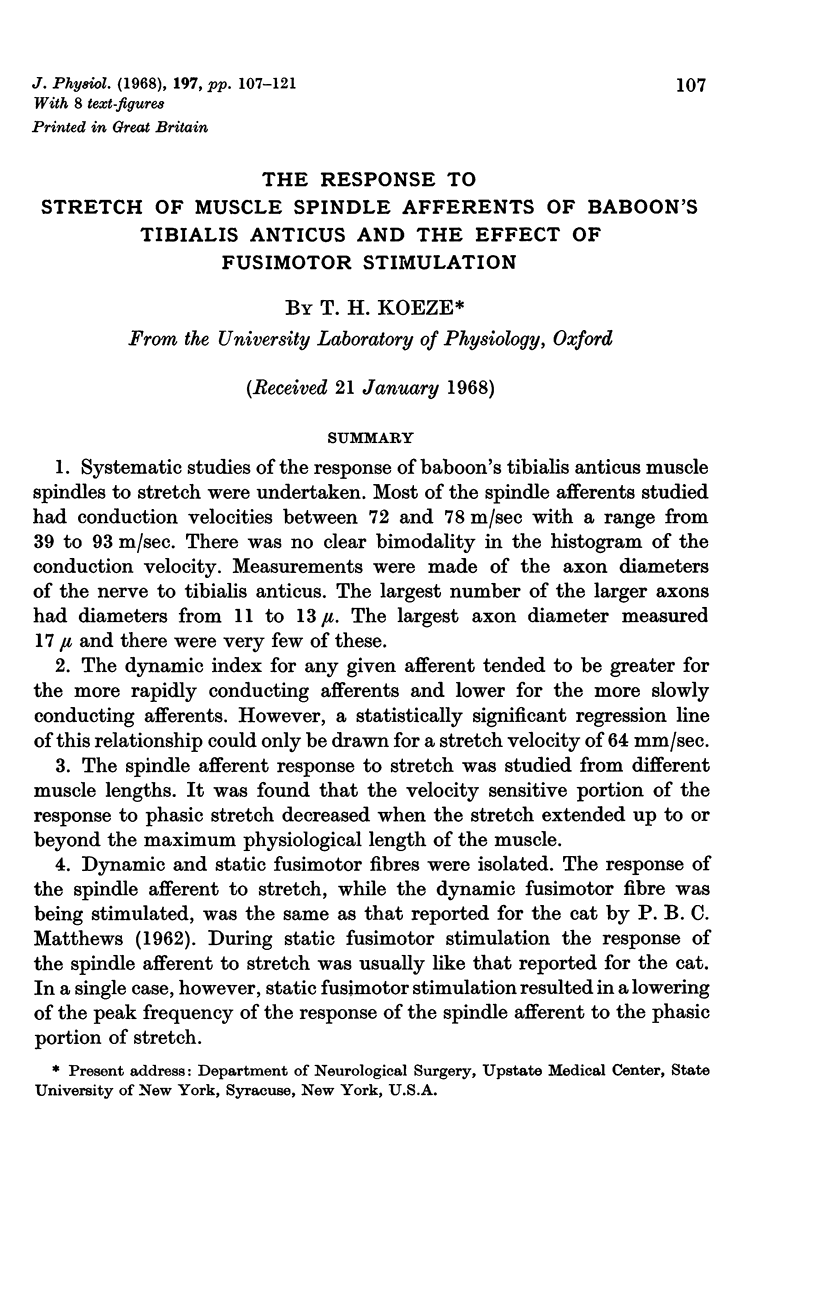
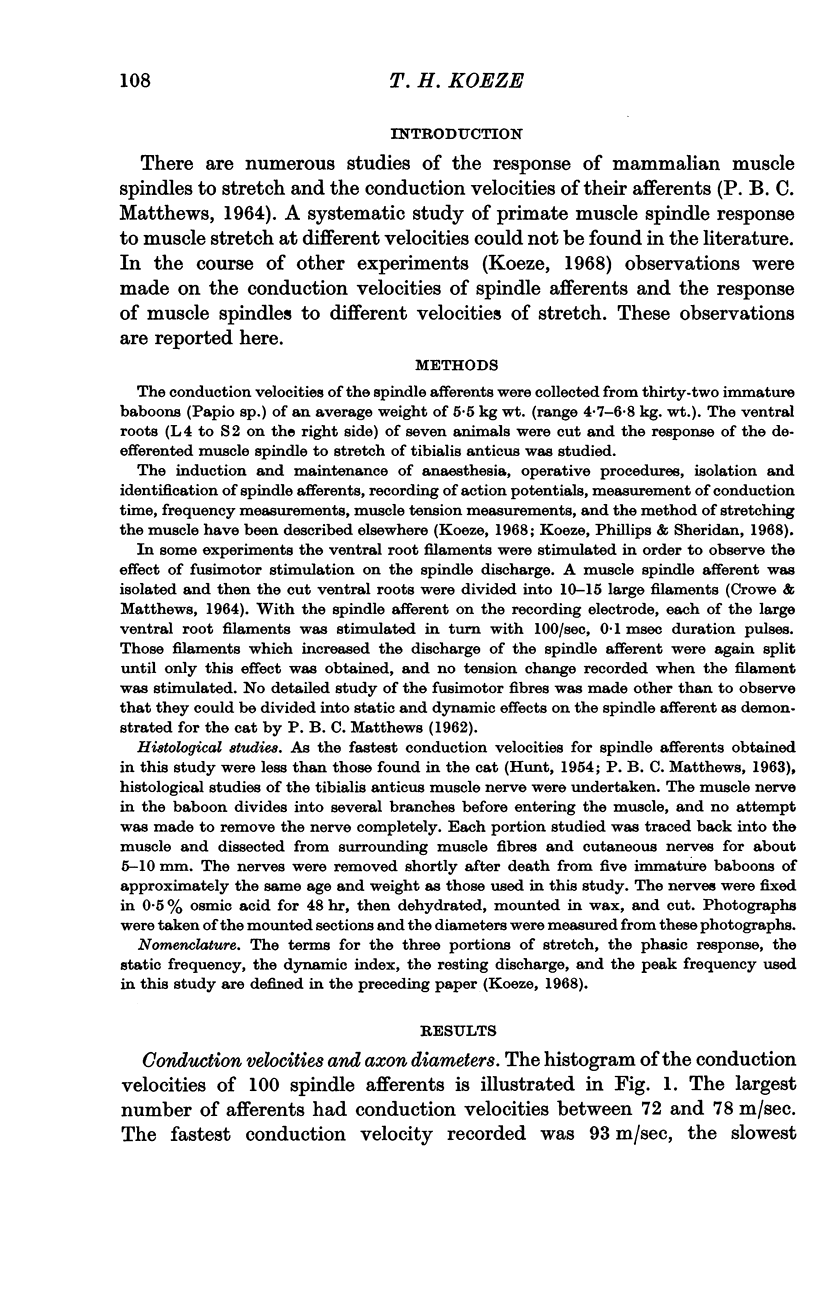
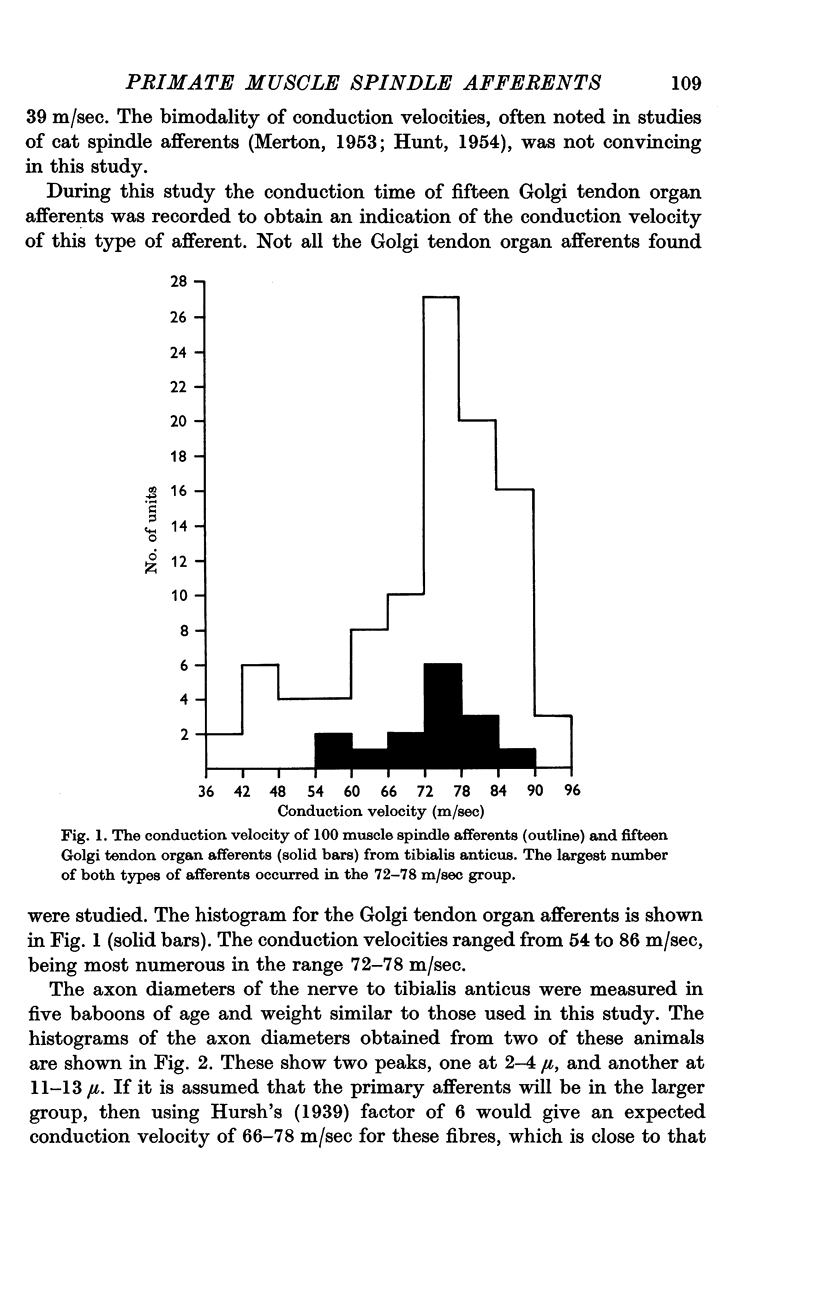
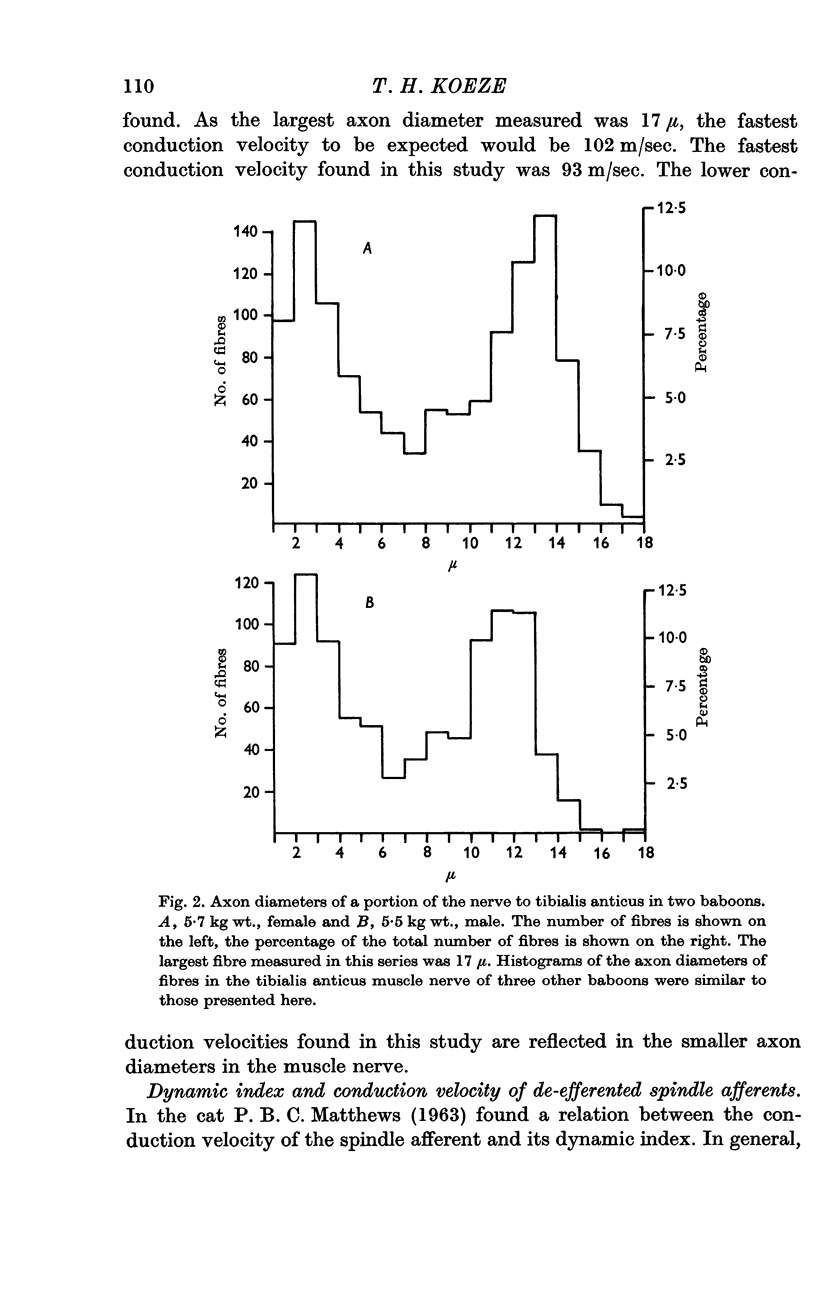
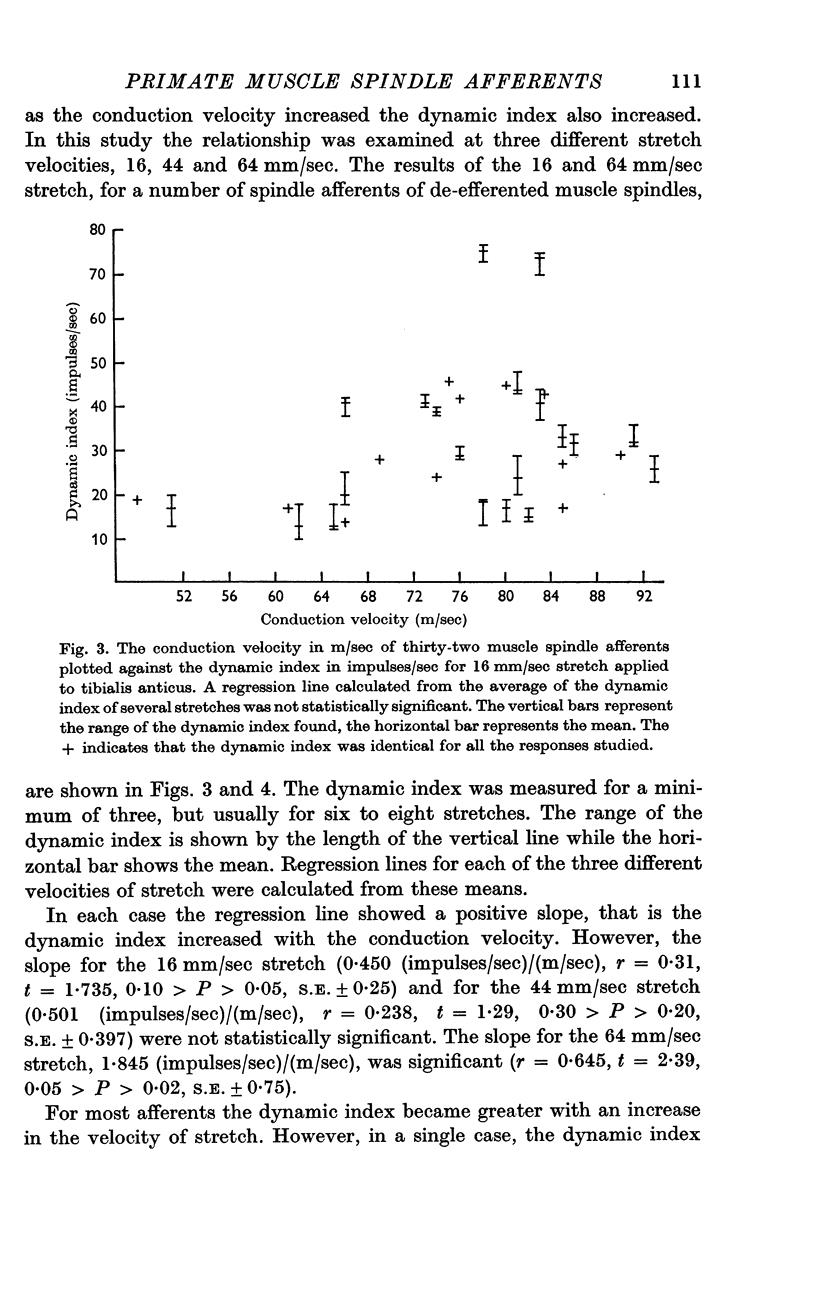
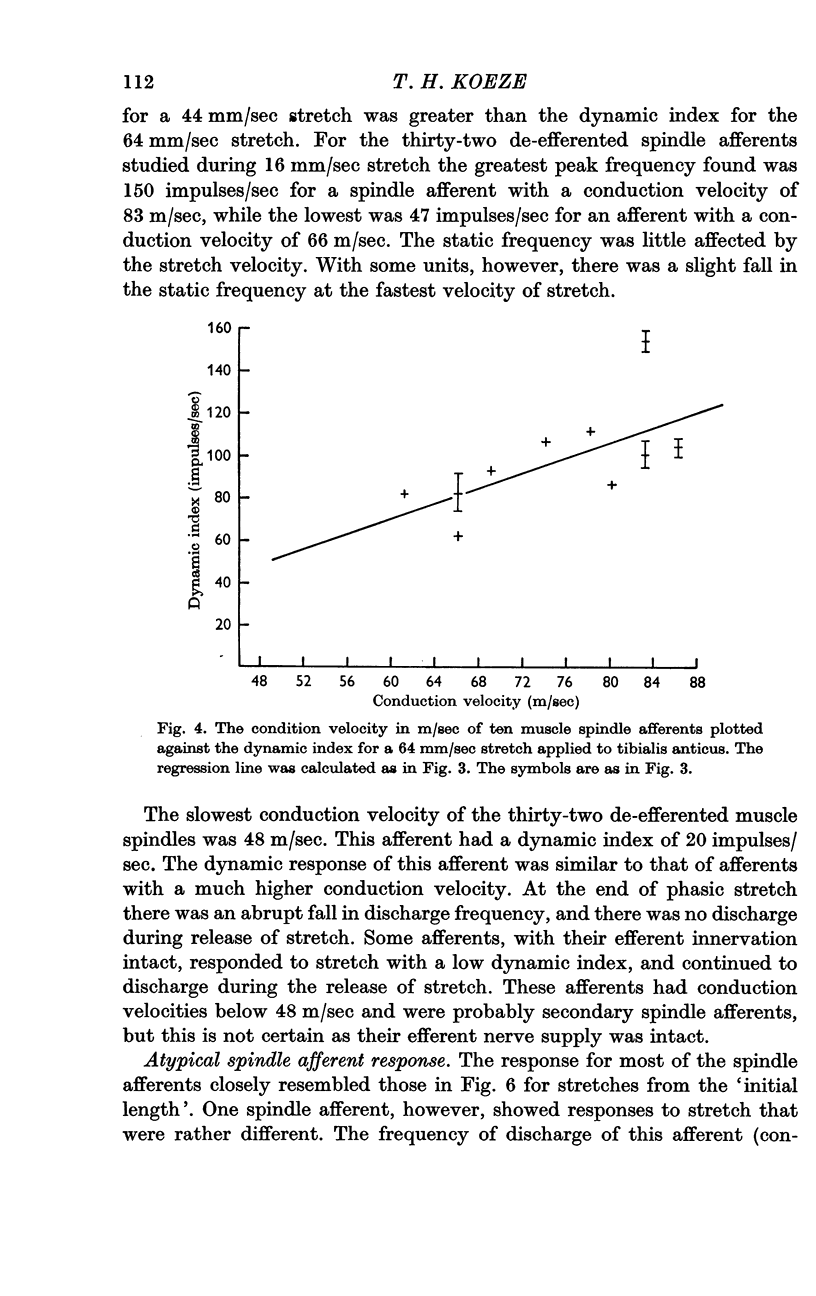
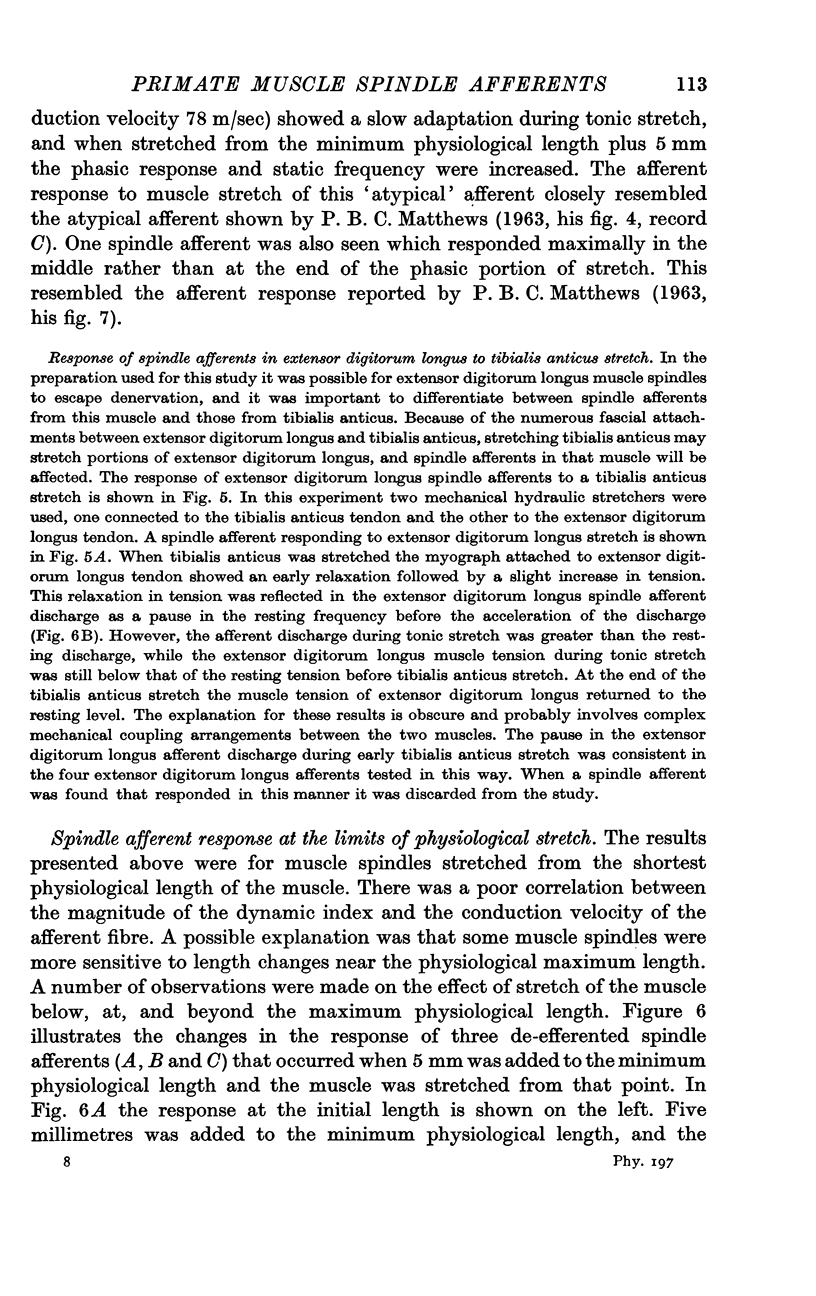
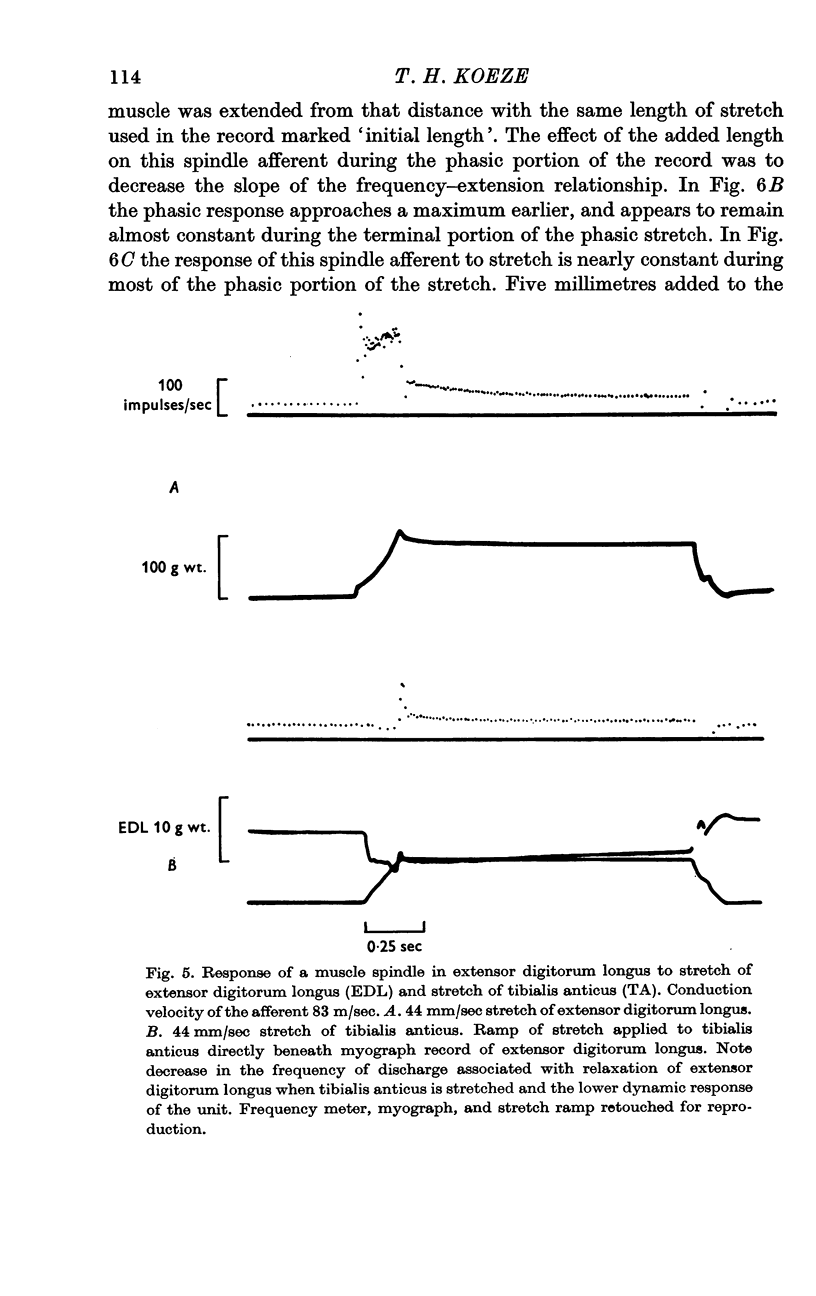
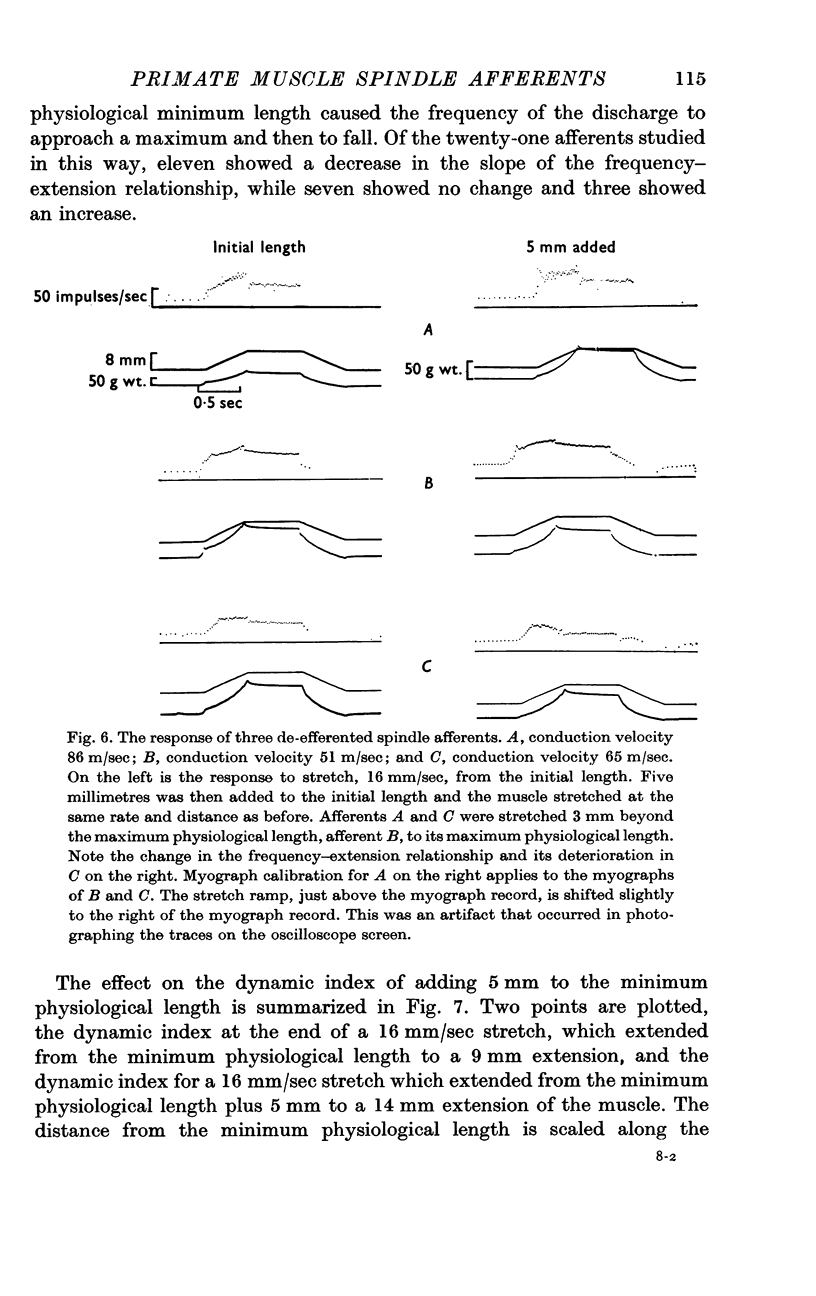
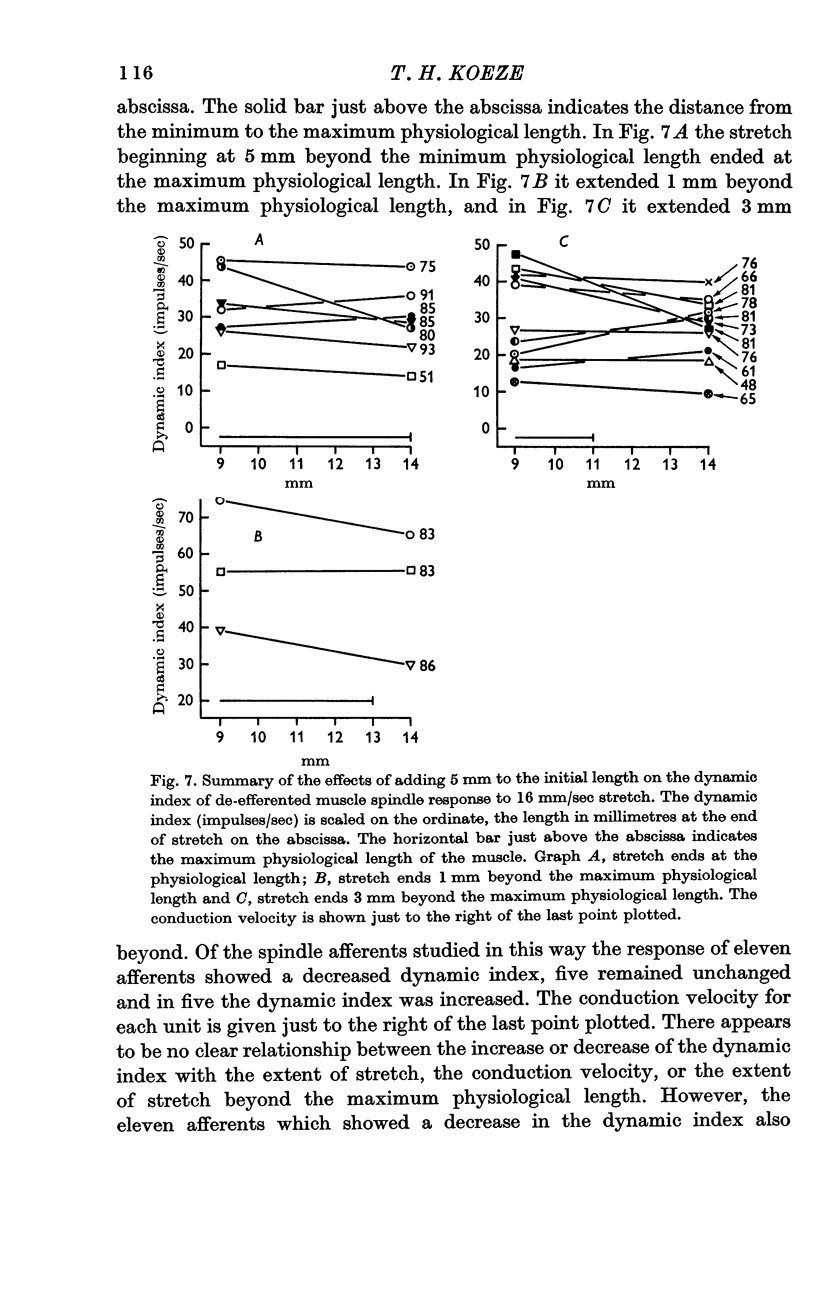
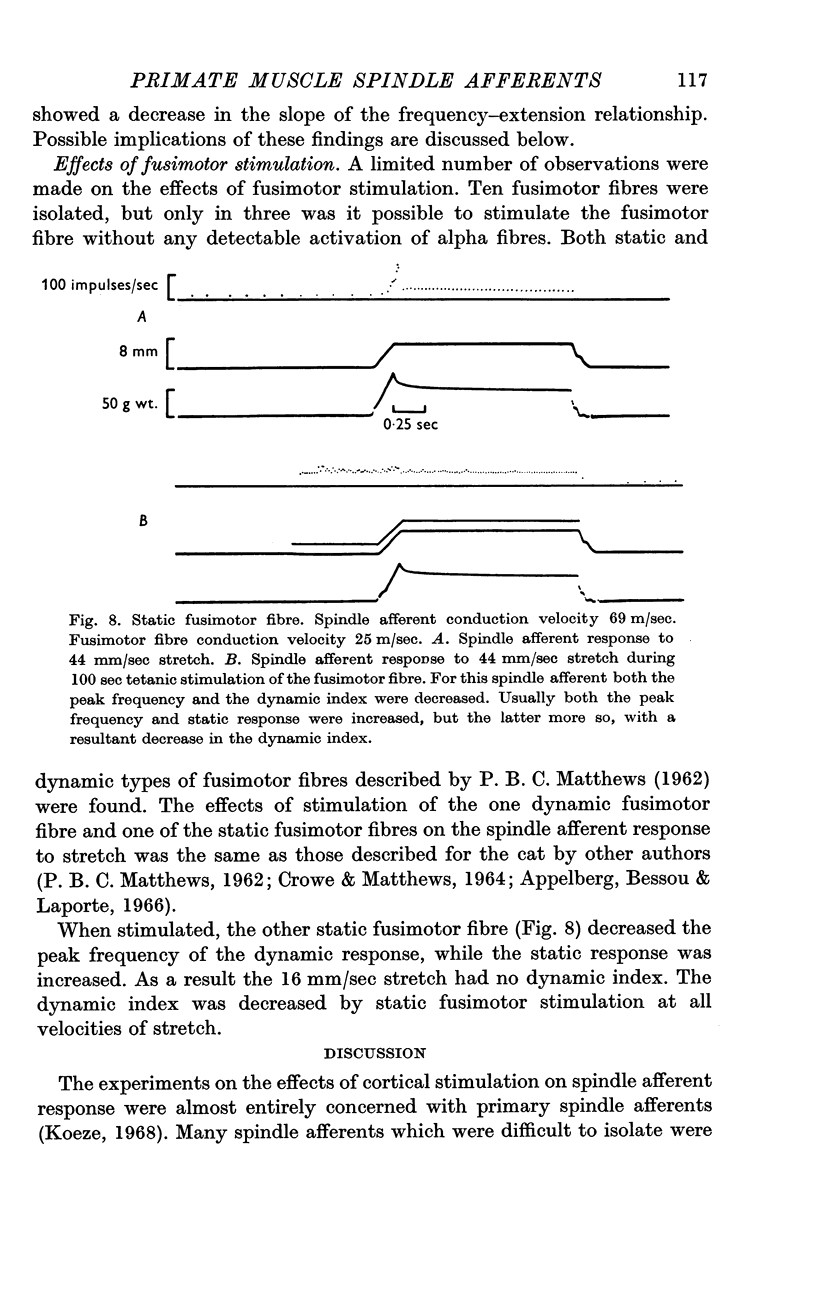
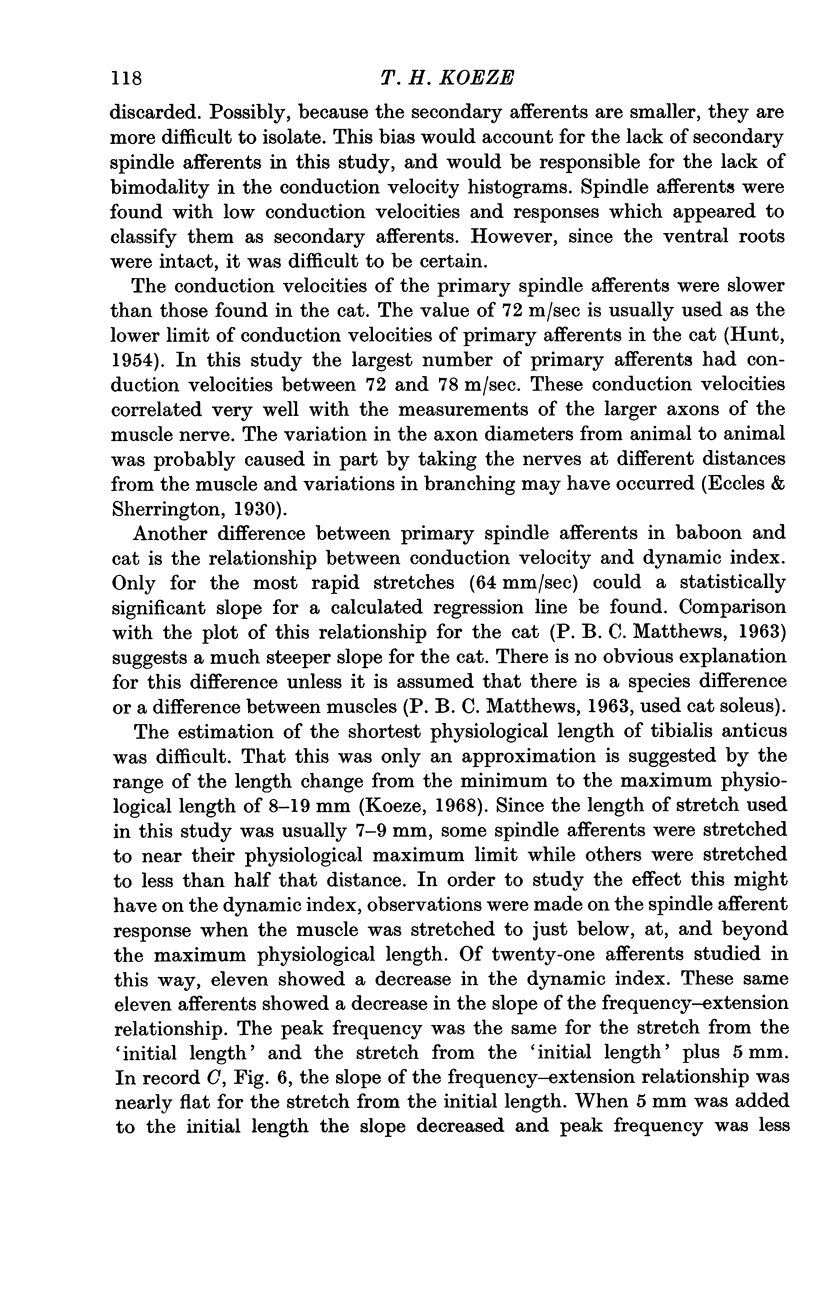
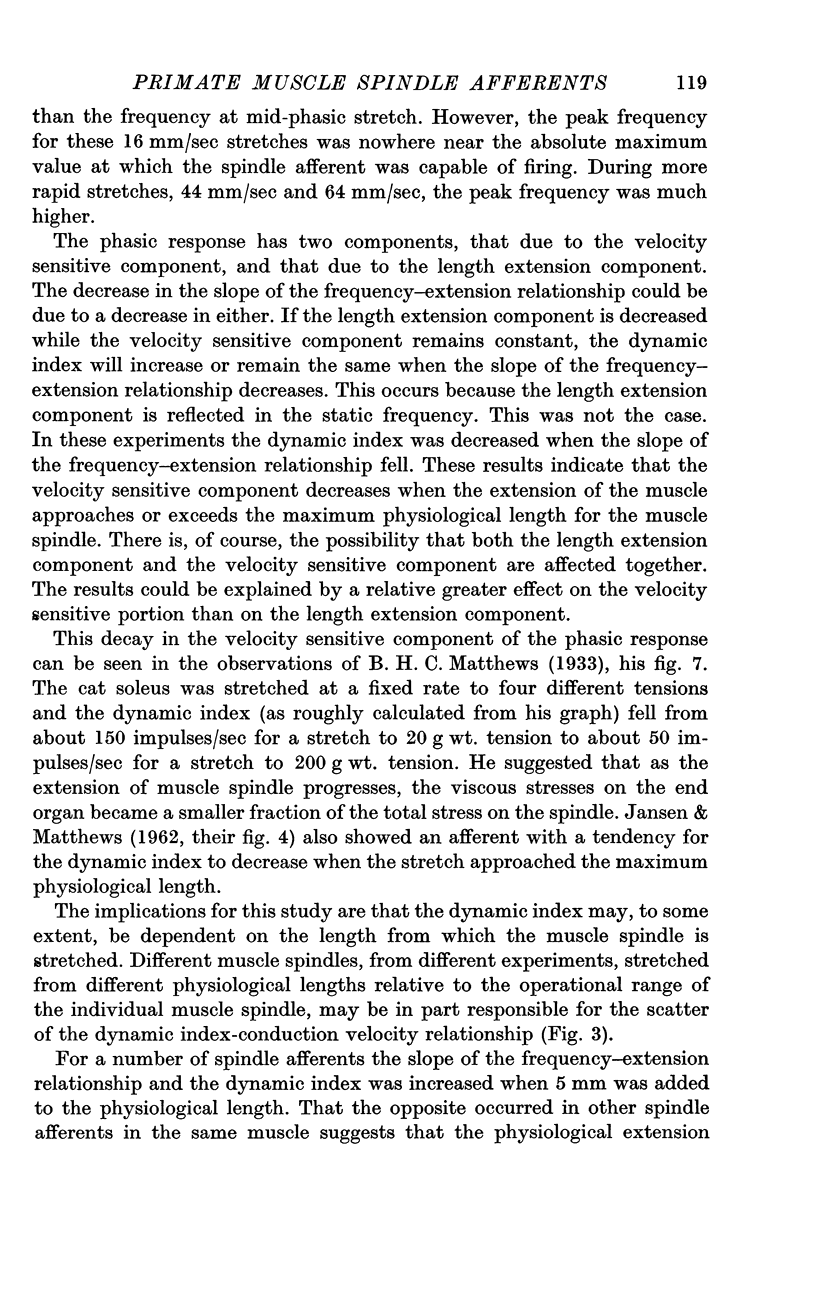
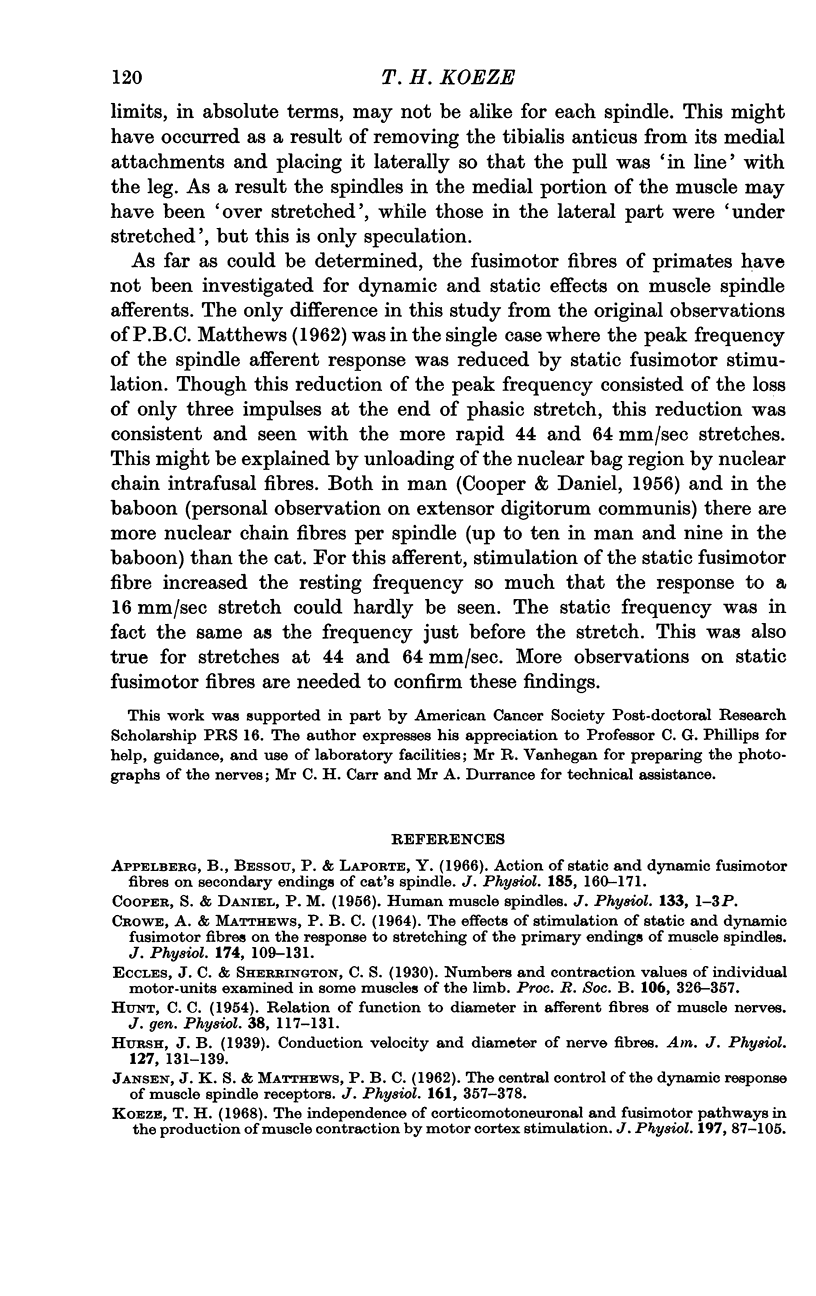
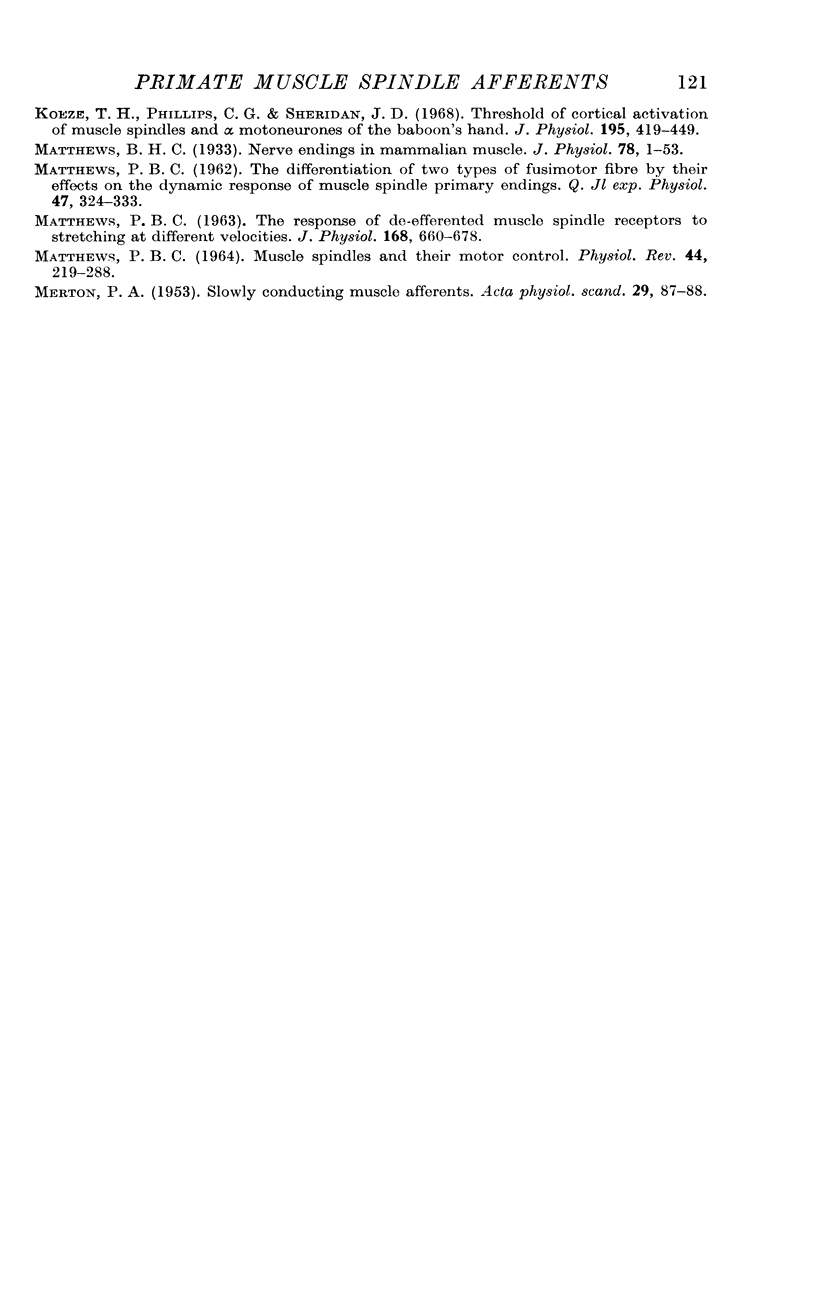
Selected References
These references are in PubMed. This may not be the complete list of references from this article.
- Appelberg B., Bessou P., Laporte Y. Action of static and dynamic fusimotor fibres on secondary endings of cat's spindles. J Physiol. 1966 Jul;185(1):160–171. doi: 10.1113/jphysiol.1966.sp007978. [DOI] [PMC free article] [PubMed] [Google Scholar]
- COOPER S., DANIEL P. M. Human muscle spindles. J Physiol. 1956 Jul 27;133(1):1–3P. [PubMed] [Google Scholar]
- CROWE A., MATTHEWS P. B. THE EFFECTS OF STIMULATION OF STATIC AND DYNAMIC FUSIMOTOR FIBRES ON THE RESPONSE TO STRETCHING OF THE PRIMARY ENDINGS OF MUSCLE SPINDLES. J Physiol. 1964 Oct;174:109–131. doi: 10.1113/jphysiol.1964.sp007476. [DOI] [PMC free article] [PubMed] [Google Scholar]
- HUNT C. C. Relation of function to diameter in afferent fibers of muscle nerves. J Gen Physiol. 1954 Sep 20;38(1):117–131. doi: 10.1085/jgp.38.1.117. [DOI] [PMC free article] [PubMed] [Google Scholar]
- JANSEN J. K., MATTHEWS P. B. The central control of the dynamic response of muscle spindle receptors. J Physiol. 1962 May;161:357–378. doi: 10.1113/jphysiol.1962.sp006892. [DOI] [PMC free article] [PubMed] [Google Scholar]
- Koeze T. H., Phillips C. G., Sheridan J. D. Thresholds of cortical activation of muslce spindles and alpha motoneurones of the baboon's hand. J Physiol. 1968 Mar;195(2):419–449. doi: 10.1113/jphysiol.1968.sp008466. [DOI] [PMC free article] [PubMed] [Google Scholar]
- Koeze T. H. The independence of corticomotoneuronal and fusimotor pathways in the production of muscle contraction by motor cortex stimulation. J Physiol. 1968 Jul;197(1):87–105. doi: 10.1113/jphysiol.1968.sp008548. [DOI] [PMC free article] [PubMed] [Google Scholar]
- MATTHEWS P. B. MUSCLE SPINDLES AND THEIR MOTOR CONTROL. Physiol Rev. 1964 Apr;44:219–288. doi: 10.1152/physrev.1964.44.2.219. [DOI] [PubMed] [Google Scholar]
- MATTHEWS P. B. THE RESPONSE OF DE-EFFERENTED MUSCLE SPINDLE RECEPTORS TO STRETCHING AT DIFFERENT VELOCITIES. J Physiol. 1963 Oct;168:660–678. doi: 10.1113/jphysiol.1963.sp007214. [DOI] [PMC free article] [PubMed] [Google Scholar]
- MATTHEWS P. B. The differentiation of two types of fusimotor fibre by their effects on the dynamic response of muscle spindle primary endings. Q J Exp Physiol Cogn Med Sci. 1962 Oct;47:324–333. doi: 10.1113/expphysiol.1962.sp001616. [DOI] [PubMed] [Google Scholar]
- MERTON P. A. Slowly conducting muscle spindle afferents. Acta Physiol Scand. 1953 Jun 26;29(1):87–88. doi: 10.1111/j.1748-1716.1953.tb01003.x. [DOI] [PubMed] [Google Scholar]
- Matthews B. H. Nerve endings in mammalian muscle. J Physiol. 1933 Apr 13;78(1):1–53. doi: 10.1113/jphysiol.1933.sp002984. [DOI] [PMC free article] [PubMed] [Google Scholar]


